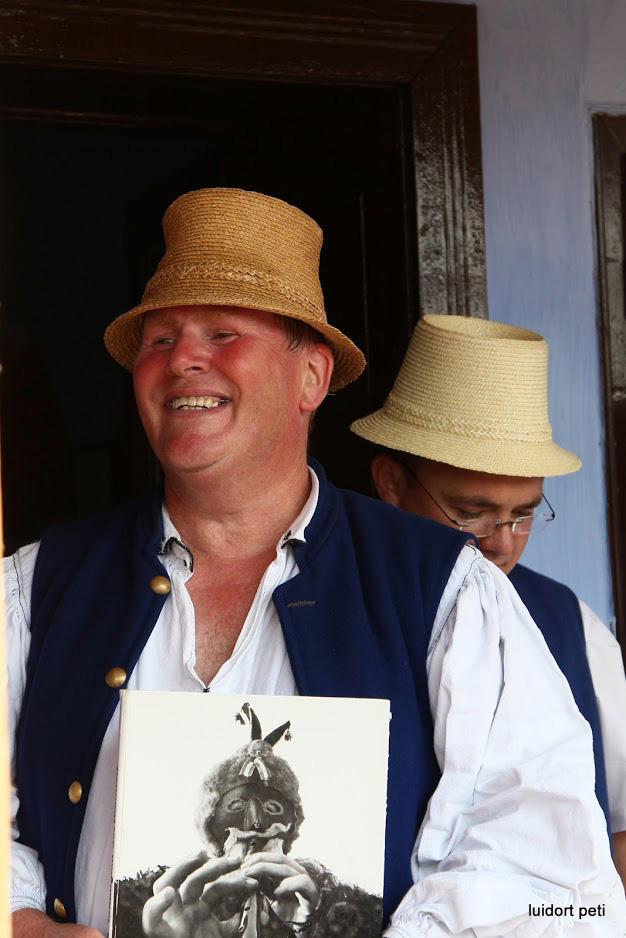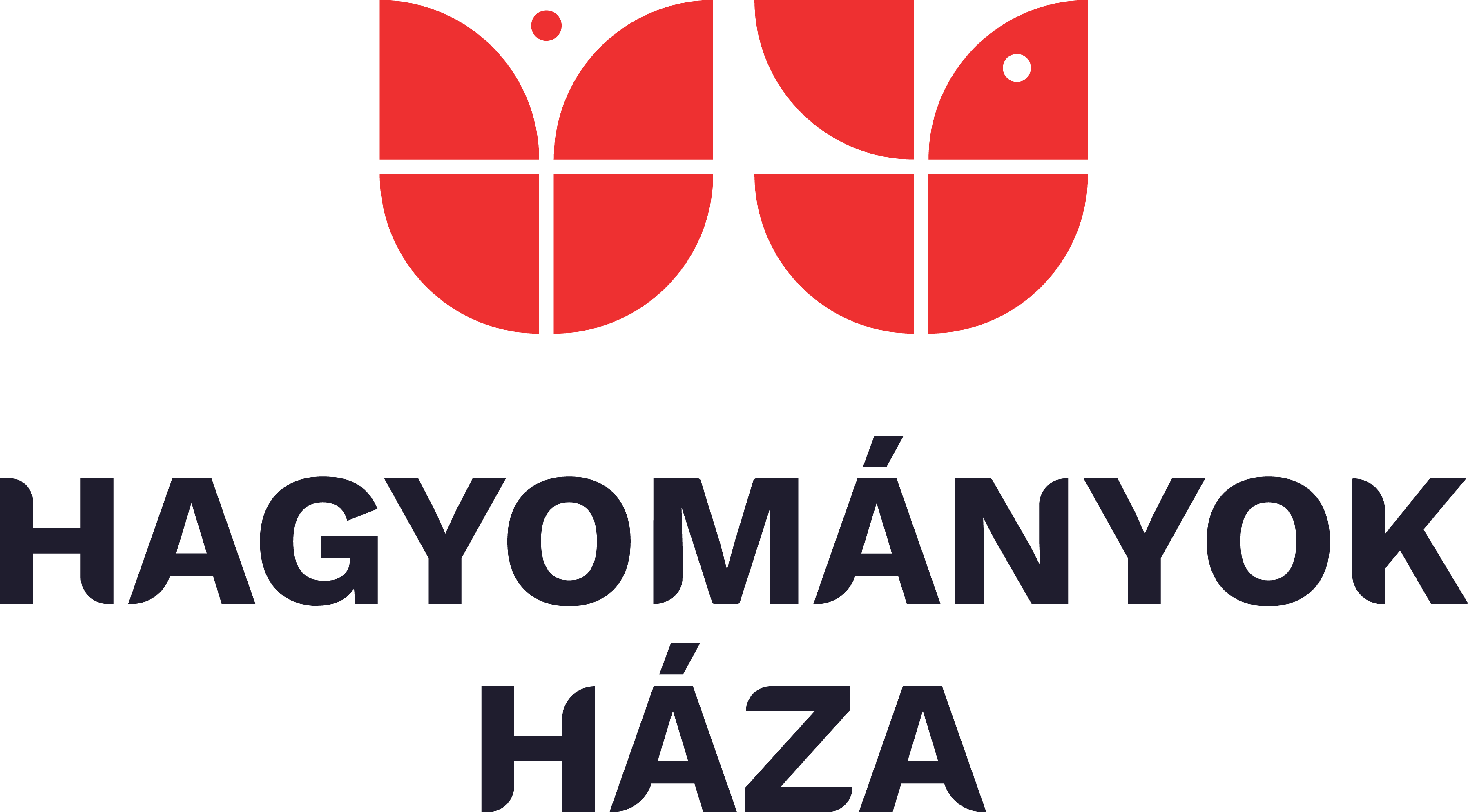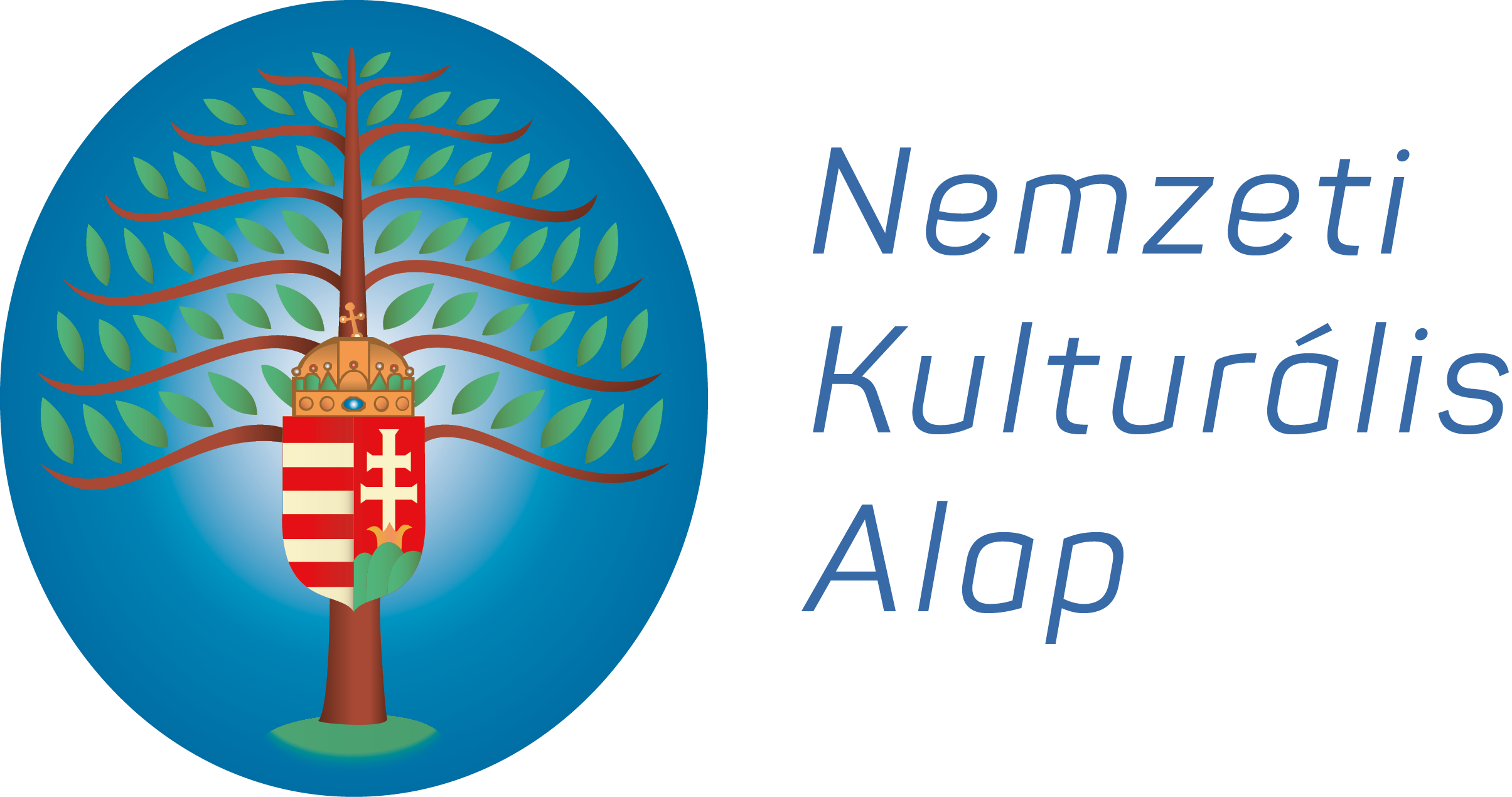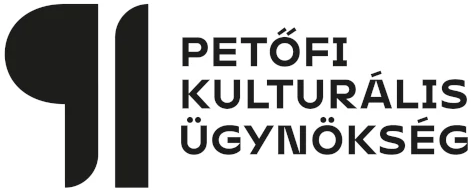Emlékek
Michel van Langeveld, alias „HollandMihály”
első
1984-ben láttam egy érdekes fotókönyvet Korniss Pétertől egy amszterdami antikváriumban. A címe ez volt: „Elindultam világ útján”, fekete-fehér fotókkal teli könyv a magyarországi és erdélyi hagyományos életről, kultúráról és néphagyományokról. Ebben a könyvben olyan képek is voltak, amelyeken kis szobában falusiak táncolnak élőzenére. Azonnal megvettem a könyvet, és a fotók olyan nagy hatást gyakoroltak rám, hogy két héttel később visszamentem Amszterdamba és megvettem a maradék tizennégy példányt. Odaajándékoztam őket a barátaimnak születésnapjuk alkalmából.
A táncházfotókról kiderült, hogy 1967-1973 körül Széken készültek. Később megtudtam, hogy ezek a fotók is segítették a magyar táncházmozgalom létrejöttét Budapesten 1972-ben. Az egész 1972. május 6-án kezdődött, szintén egy könyvesboltban. Ezután nem sokkal táncházakat kezdtek szervezni Magyarországon és annak határain túl is.
1985 decemberében tartották az első magyar táncházat Utrechtben. Jómagam 1980 óta vagyok fanatikus néptáncos. Tilburgban (Hollandia) minden héten jártam néptáncot tanulni, néptáncot Európából és azon túlról. Egy új világ nyílt meg előttem. Hamarosan felkértek, hogy vegyek részt bemutatócsoportok fellépésein, és lassan szinte minden hétvégén táncoltam valahol.
1986-ban hallottam először az utrechti magyar táncházról, ahová azután minden hónapban elutaztam. Délután három óra táncoktatás, este táncház élőzenével. Itt időnként magyarországi és erdélyi zenei zenekarok is játszottak. Crispijn Oomes alias „De Speelman”-nek köszönhető, hogy magyar zenekarok is eljöttek Hollandiába, hogy a táncházakban zenéljenek. Crispijn Oomes turnékat szervezett, szállást intézett nekik. Így történt, hogy sok zenekarral ismerkedtem meg, akiknek szállást és ellátást ajánlottam fel a saját otthonomban. A Tékával kezdődött, majd hamarosan más zenekarok, zenészek és énekesek is jöttek, mint például Fodor „Neti” Sándor, Árus Feri, Berecz András, a Magyarpalatkai banda, zenészek Erdőszombatelkéről, vagy a Nadara Gypsyband. Még Zerkula János is fellépett a táncházban! A legtöbben a saját magyar táncházam padlásán aludtak, ami az évek során fokozatosan átalakult múzeummá. A múzeumban őriztem két üveg húszéves széki házi pálinkát is, amire nagyon vigyáztam. Sajnos... a palatkai urak látogatása után már csak az üres palackok maradtak. De ez is hozzátartozik!
Amikor 1990-ben megnyílt a román határ, készen álltam, hogy végre a saját szememmel lássam Szék falut. Különösen a „széki tisztaszoba” megtekintésére hívták fel a figyelmemet. Magyarországon keresztül, egy meglehetősen hosszú út után értem Székre, és már 300 méter után megálltam megnézni egy ilyen hagyományos helyiséget. A hosszú út alatt megszomjaztam, így kértem egy kis vizet. Kis poharakban kínálták, és természetesen pálinka volt, nem víz. Egy pálinka, két pálinka, egy bableves, majd még egy pálinka. Soha korábban nem kínáltak ilyen erős „limonádéval", így hamar részeg lettem. Aztán két fiú elvitt egy másik házba aludni. Másnap reggel egy széki szobában ébredtem, és persze nem tudtam, hova kerültem az éjszaka. Kinyitottam az ablakot, és meglepődtem azon, amit láttam. Mindenfelé lovas kocsik, ökrös szekerek és mindenki népviseletben járkált. Olyan érzés volt, mintha belecsöppentem volna az „Alice Csodaországban" mesébe.
2004-ben vettem egy fantasztikus régi kék házat Széken, hogy ott tudjak maradni a nyári szünetben. Néhány nappal azután, hogy elmentünk a közjegyzőhöz, hogy hivatalosan aláírjuk az adásvételt, odajött hozzám egy idős hölgy, hogy gratuláljon az új vásárlásomhoz. Elmesélte, hogy megvettem Csipkeszeg régi táncházát. Nehéz leírni, mennyire boldog voltam, amikor ezt megtudtam. Új fejezet kezdődött az életemben.
 Csipkeszegi táncház
Csipkeszegi táncházLegjobb barátom és szomszédom, Sipos Pisti segítségével gyorsan meghívtuk a „Széki kalap" tánccsoportot és újra táncházat rendeztünk a régi táncház udvarán. Azt mondtam nekik: „Gyertek el újra hozzám széki viseletben, és ünnepeljük meg a vásárlásomat, én biztosítom a sört és a pálinkát!” Fantasztikus táncos mulatság lett, ami egészen hajnalig tartott.
2005-től kezdve jó pár dolog történt. A régi táncházat szakképzett iparosok és szomszédok segítségével restauráltam. Építettünk egy új táncházat a saját telkünkön, és vettem egy régi házat az utca túloldalán, amit szintén felújítottam.
2011-ben végleg Székre költöztem. Ebben az évben a régi forrószegi táncházat megvette egy házaspár. A régi épületet le akarták bontani, helyére egy új házat akartak építeni. Jó hír nekik, de nem nekem. Gyorsan felmértem, hogy meg kell menteni valahogy ezt a táncházat a bontástól. Megpróbáltam megvenni a házat, de nem sikerült. Aztán jött az ötlet, hogy felvásároljam a ház faanyagát, beleértve az eredeti tetőt, gerendákat, ablakokat és ajtókat. Jelképes, 1000 lejért vihettem el az anyagokat és felépítettem a forrószegi táncházat Csipkeszegen.
A forrószegi táncház új funkciót is kapott. 2012 augusztusa óta ez az épület ad otthont Korniss Péter híres táncházfotói gyűjteményének. Az újjáépített táncházat Novák Ferenc „Tata" nyitotta meg ünnepélyesen.
Régen télen a táncházban táncoltak, nyáron az istállóban. Ezért 2013-ban felépítettem egy nádtetős istállót, amelyben többek között tánccsizma-gyűjtemény is található. Nem kevesebb mint 500 pár van kiállítva.
Azonban nem csak a forrószegi táncház ragadta meg a figyelmemet... Az elmúlt húsz évben ez a ház élelmiszerboltként is működött, ahol friss kenyeret is lehetett venni. Minden nap vettem valamit. Lassan, de biztosan felfigyeltem arra a gyönyörű szép hölgyre is, aki itt állt a pult mögött. Erzsike volt a neve. 2012. május 20-án összeházasodtunk, amit nagy mulatsággal ünnepeltünk.
2017-ben került fel a hab a tortára. A tilburgi magyar táncház padlásáról minden tárgyam átkerült a csipkeszegi táncház padlására. Duplán ünnepi év volt ez Korniss Péternek is. Ő maga 80 éves lett, és pontosan 50 éve készültek a széki fotók. Ez nagyon jó ok volt arra, hogy ismét meghívjuk Pétert a táncházmúzeum megnyitására. Megint nagy mulatság volt, sok zenével és tánccal.
 Csipkeszeg múzeum megnyitó, 2017. június 24. (Fotó: Vogt Gergely)
Csipkeszeg múzeum megnyitó, 2017. június 24. (Fotó: Vogt Gergely)Szeretnék köszönetet mondani mindenkinek, aki eljuttatott a táncház világába. Ki gondolta volna, hogy ezek a fantasztikus táncházlátogatások végül annyira befolyásolják a sorsomat, hogy ez lesz életem munkája?
A táncházmúzeum minden nap látogatható, benne Korniss Péter állandó fotókiállítása. Rendszeresen szervezünk táncházakat és van egy Bed & Breakfast szállásunk is. További információ elérhető a honlapunkon: www.csipkeszeg.nl
Isten hozta Széken... a magyar táncházmozgalom bölcsőjében. És ha feltámad a szél, a csizmák már táncolnak!
Fordította Bede Judit.
második
It is 1984 when I saw an interesting photo book by Korniss Péter in a second-hand bookshop in Amsterdam. The title was: “Elindultam világ útján”. A book full of black and white photos about traditional life, culture and traditions in Hungary and Transylvania. In this book also pictures of villagers dancing in small houses to live music. I bought the book right away and the photos left such a great impression on me that 2 weeks later I went back to Amsterdam to buy the remaining 14 copies. I gave them as gifts to my friends on their birthday.
The dance house photos turned out to have been made in Szék around 1967 – 1973. Later I heard that these photos helped to create the Hungarian Dance House Movement in Budapest in 1972. It all started on May 6 1972. And also in a bookstore. Soon dance houses were organized in Hungary and beyond.
In December 1985 the first Hungarian dance house was organized in Utrecht. I have been a fanatic folk dancer since 1980. Every week in Tilburg (NL) I learned folk dances from all over Europe and beyond. A new world opened up for me. Soon I was asked to dance in demonstration groups and almost every weekend I was dancing somewhere.
In 1986 I first heard of the Hungarian dance house in Utrecht. Every month I traveled to the dance house. 3 hours of dance instruction in the afternoon and always a dance house with live music in the evening. Music orchestras from Hungary and Transylvania also played here now and then. It is thanks to Crispijn Oomes alias “”De Speelman” that Hungarian music orchestras came to the Netherlands to play in the dance houses. Crispijn Oomes organized tours for them and was looking for places to sleep. And so it happened that in a fun way I became acquainted with many an orchestra who were offered a place to sleep and a nice warm meal in my own home. It started with Téka and soon other orchestras and musicians and singers followed, such as Fodor “Nettie” Sándor, Árus Ferry, Berecs András, Palatka, Erdoszombatelke, Nadara. Even Zerkula János performed in the dance house. Most all slept in my own Hungarian dance house attic, which gradually became a museum over the years. In the museum I also kept 2 bottles of házi pálinka from Szék of 20 years old, which I was very careful with. Unfortunately.... after a visit from the lords of Palatka, only the empty bottles remained. But that is also part of it.
When the border with Romania opened in 1990, I was ready to finally see the village of Szék with my own eyes. It was recommended to me to watch the “Széki szoba” in particular. After a long journey from Hungary I reached Szék in the vening and already after 300 meters I stopped to see such a traditional room. The long journey had made me thirsty and asked for a little water. I was offered water in small glasses. Of course this was pálinka. One pálinka, two pálinka, a bean soup and then another pálinka. Never before had I been offered such a strong lemonade and soon I was quite drunk. Two boys then took me to another house to sleep. The next morning I woke up in a Széki szoba and of course I didn't know where I had been taken in the night. I opened the window and was surprised by what I saw. All horse carts and cow carts and everyone walked around in traditional costume. It felt like I had entered the fairy tale of Alice in Wonderland.
In 2004 I bought a fantastic old blue house in Szék to be able to stay during the summer holidays. A few days after we went to the notary to officially sign the sale, an old lady came up to me to congratulate me on my new purchase. She told me that I had bought the old dance house of Csipkeszeg. It's hard to describe how happy I was when I heard this. A new page in my life has begun.
With the help of my best friend and neighbor Sipos Pisti, we quickly invited his dance group, the Széki kalap dance group. We once again organized a grand dance house in the yard of the old dance house. I told them: “If you again come to dance with me in Széki costume to celebrate my purchase, I will provide the beer and the pálinka.” It turned out to be a fantastic dance party that went on until the wee hours.
From 2005 there were many activities. I restored the old dance house with the help of old skilled craftsmen and neighbors. We built a new dance house on our own property and I bought an old house across the street which was also restored.
In 2011 I moved permanently to Szék. In that year a new couple bought the old dance house of Forrószeg. They wanted to demolish the old house and replace it with a new house. Good news for them, but not for me. I soon realized that somehow this dance house had to be saved from the demolition hammer. I tried to buy the house but failed. Then I got the idea to buy up the wooden material of the house, including the original roof, beams, windows and doors. For a symbolic 1000 lei I was able to take the material with me and rebuilt Forrószeg's dance house in Csipkeszeg.
The Forrószegi dance house also got a new destination. Since August 2012, the famous collection of dance house photos by Korniss Péter has been housed here. The rebuilt dance house was solemnly opened by Novák Ferenc tata.
In the winter there was often dancing in the dance house and in the summer in the barn. That is why a barn with a thatched roof was added in 2013. This barn houses, among other things, a collection of dancing boots. In total there are no fewer than 500 pairs on display.
Not only Forrószeg's dance house caught my attention. The last 20 years this house also served as a grocery store. And you could also buy fresh bread. I bought something every day. Slowly but surely I also got attention for that beautiful beautiful lady who stood behind the counter here. Her name was Erzsike. On May 20, 2012, we got married, which was again celebrated with a big party.
In the year 2017 came the icing on the cake. All my stuff from the Hungarian dance house attic in Tilburg got a new destination in the attic of the Csipkeszegi dance house. This was a double crown year for Korniss Péter. He became 80 years old and was also exactly 50 years a photographer. A very good reason to invite Péter again this time to open the dance house museum. And again it was a big party with a lot of music and dancing.
I would like to thank everyone who has brought me on the dance house track. Who would have ever imagined that visiting these fantastic dance houses would eventually influence my life so much that it would become my life's work.
The dance house museum can be visited daily, including the permanent photo exhibition of Korniss Péter. We also regularly organize dance houses and we have a Bed & Breakfast. More information on our website: www.csipkeszeg.nl
Welcome to Szék..... the cradle of the Hungarian Dance House Movement. And when the wind is blowing, the boots are already dancing!
Michel van Langeveld, alias “HollandMihály”.







